The Ardent Alligator Returns
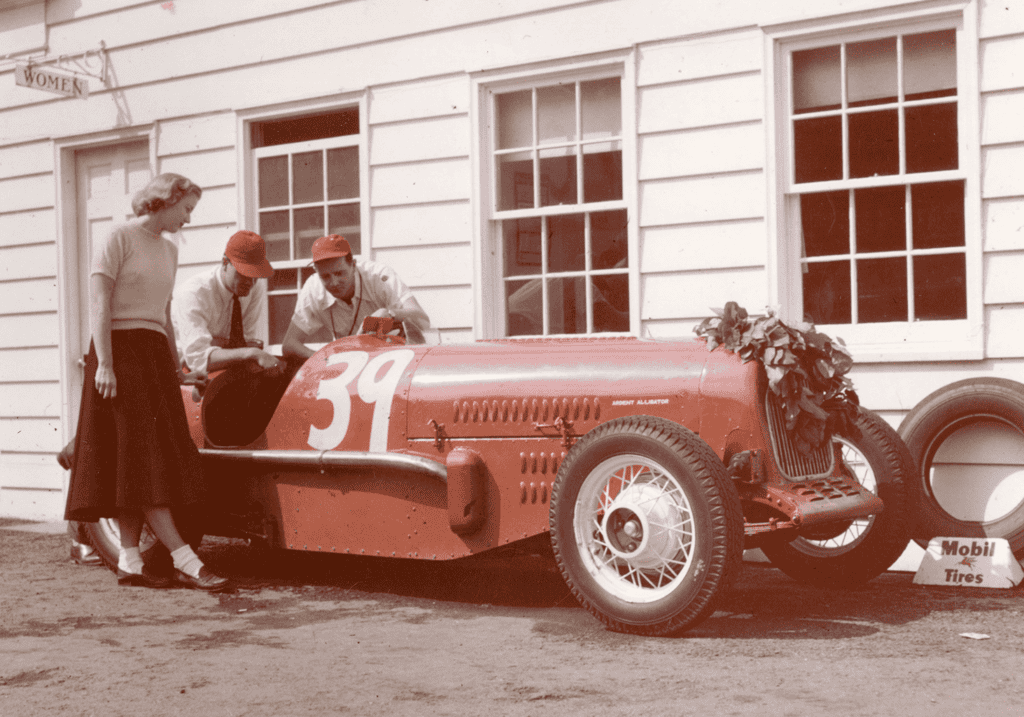
I just succeeded in buying back my Dad’s old racer, the Ardent Alligator. Much can be inferred about him from the name he chose for this contraption, a red-painted hell brew of Brooklands Riley Nine and American flathead V8 plus assorted drive line bits to connect the two. A notoriously deft hand at turning a phrase, my dad’s “Ardent Alligator” tag neatly conflated the car’s Florida creation in the repair shop of the Tamiami Freightways Trucking Company in Tampa, with the frenzied, hormone-maddened, bellowing rut of the state’s largest predator.
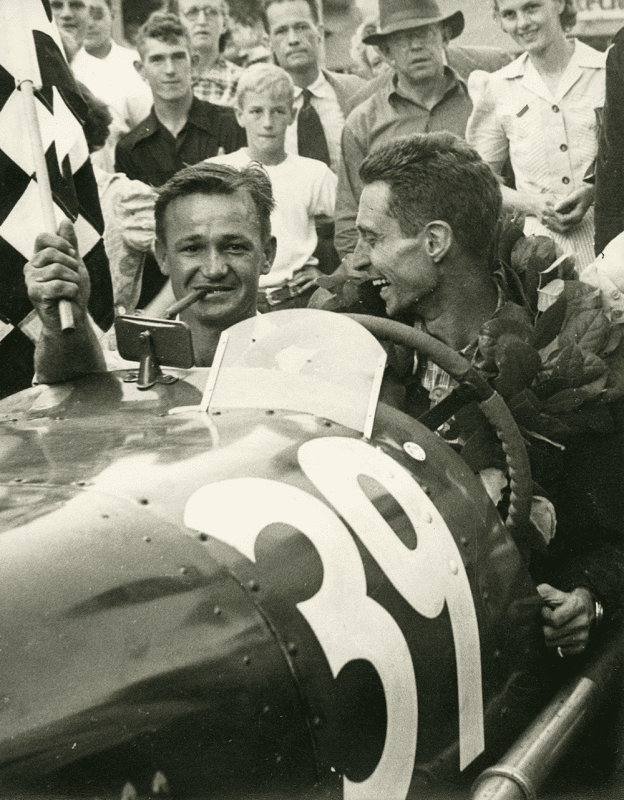
Aptly named, the car was fast, dangerous and loud. At the wheel of the Alligator, Dad won the 1949 Watkins Glen “Grand Prix”, the event’s feature race, over Briggs Cunningham driving his new Ferrari 166 Spyder. The Alligator may have been built by truck mechanics, but when properly provoked, she had an impressive turn of speed. My dad raced the Alligator only a few more times, Palm Beach Shores being notable, and even lent her to Persifor Frazier to drive at the 1950 Bridgehampton races. He, himself, was a guest driver there in his old MG PA/PB special that he had sold after taking it to Le Mans in 1939. That car was returned safely into the bosom of the family many decades ago. The Alligator proved more elusive.
In 1950, Dad’s brother, my Uncle Sam, was killed at Watkins Glen driving Briggs’ 2nd place 166 Ferrari from the prior year. Devastated, my father promised his mother that he would never race again. So began the Alligator’s wilderness years.
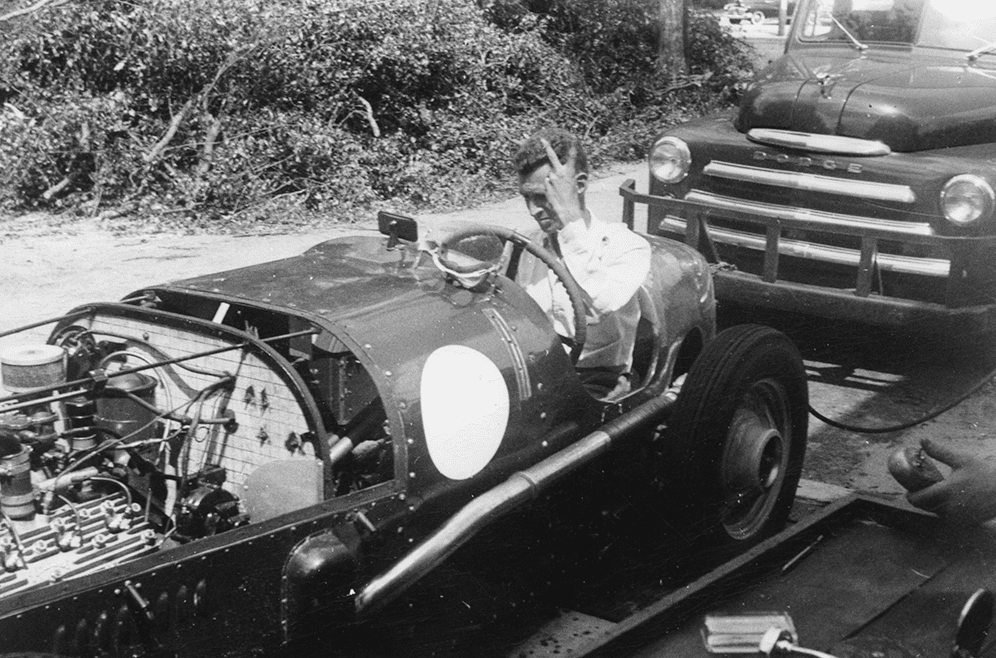
From the moment of sale, the Alligator disappears as a front line racing car. As a teenager, I was told that John Iglehart, a champion SCCA club racer and our next-door neighbor in Greenwich, Connecticut, had obtained the Alligator in disreputable condition and was restoring it locally. The shop caught fire and the Alligator was badly burned. For all that, the car survived, finally coming to rest in the hands of Pete McManus who (having restored it yet again) fettled, tuned and raced it in US vintage races for decades.
I can recall seeing the Alligator at the occasional vintage race, and, despite Pete’s best efforts, being sadly disappointed at its condition fitted as it was with a monstrous roll-over bar and generic modern racing components like fuel pumps, ignition coil, hydraulic lines and instruments. At least I had the comfort that the Alligator had found a stable home and, while not getting the attention she deserved, at least was well-loved and well-used. Over more than twenty years, Mr. McManus would not be charmed, induced or inveigled to part with the Alligator for neither swap nor money. While she was alive, my mother used to ask about the Alligator’s status and was always disappointed to hear the same old story, “Pete doesn’t want to sell.”
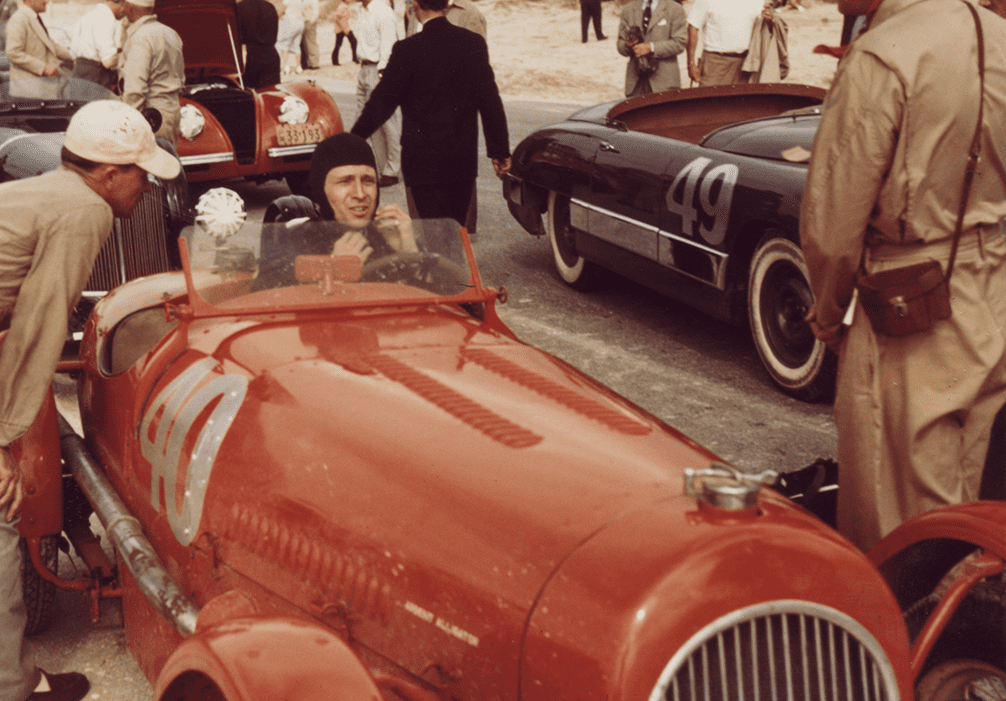
But time passes, conditions change, and the McManuses decided to move on to the next phase of their lives. The Alligator was for sale! Alas, Pete had some pretty wild ideas about its value, so I suggested he send it to auction. He did, and I bought it for substantially less than I feared. Now, residing in Naples, the Ardent Alligator has returned to the state of its birth. Ultimately, once we have assembled all the available research materials from our archives as well as from such outside sources as the Watkins Glen Motor Racing Research Center, we will rebuild her to her original specification.
But the Ardent Alligator is more than the topic of just another car story. Like a number of cars in the Miles Collier Collections at Revs Institute, this artifact has an intimate, sometimes heartbreaking relationship to me and my family. The Alligator is a family heirloom, and as such commands a complex web of associations and memories.
When I was a teenager, there was a place in my mother’s house where there hung a dozen or so professional black and white framed photos of my father racing at Le Mans with the Cunningham team in 1950, and of him driving at the 1949 Watkins Glen Grand Prix. Being a car person even then, I must have spent incalculable hours examining those pictures. The Alligator in its original state, as depicted in black and white, still lingers clearly in my memory. At any time I can conjure up my Dad’s incandescent smile as he sits behind the Alligator’s cord-wrapped steering wheel with the victory wreath of the Grand Prix around his neck. The evolution of the Alligator from a project in progress in Tampa to its advanced configuration with alloy rear wheels during the 1951 season was all there in the photographs.
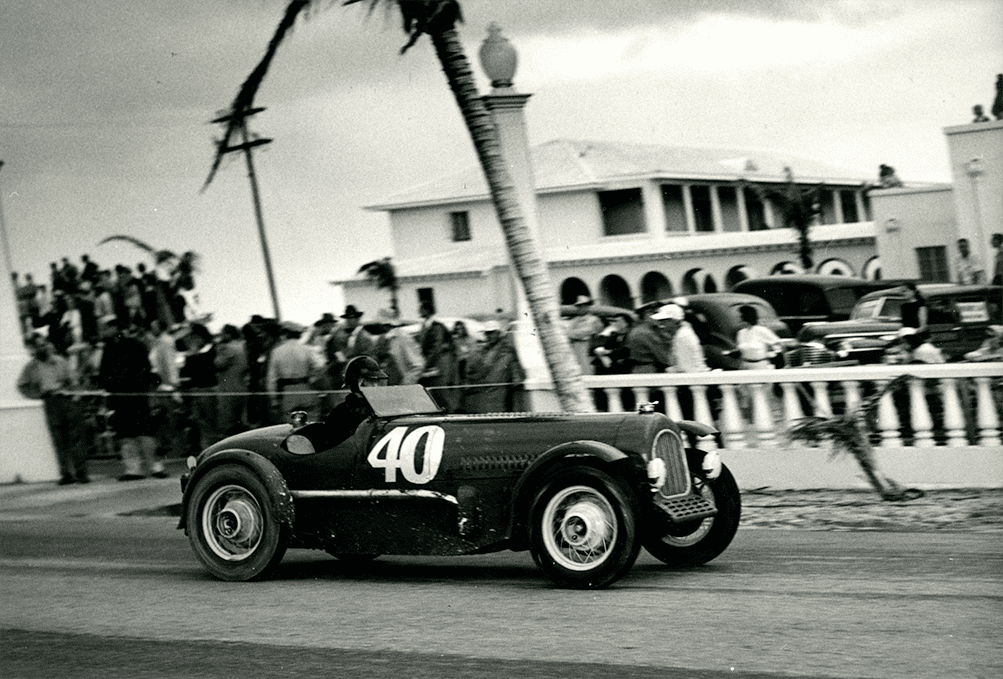
For those of us who collect cars, memory is an important and powerful force. For most of us, including me, that memory is an appropriated memory of distant times, places and people we never saw, but that we have come to know so well from stories, photographs and film. But if that memory is of real experience, if we were there, if people we knew intimately were actors, then our relationship to that vanished past is profound and personal.
I remember the day, it must have been 1951 or 1952 (which makes me four or five), when I found myself, I can’t remember how, meeting my father at the Lantana airport from whence he commuted by Beechcraft Bonanza to his work across the state in Everglades City. I remember that the Alligator was there; and he asked me if I would like to ride home with him. As we drove along a then completely unbuilt, rural A1A, where today congested traffic creeps past the Florida Gold Coast’s priciest ocean-front real estate, my Dad turned to me and said, “I’m going to drive very fast now. You need to sit quietly and not distract me. OK?” All I can remember is incredible wind, noise, vibration, the smell of hot machinery and casuarina trees flashing past at a prodigious rate. That is the Alligator I know and the one that haunts my memories. That is the Alligator that I hope to evoke in our restoration, which, for obvious reasons, we will do in-house.
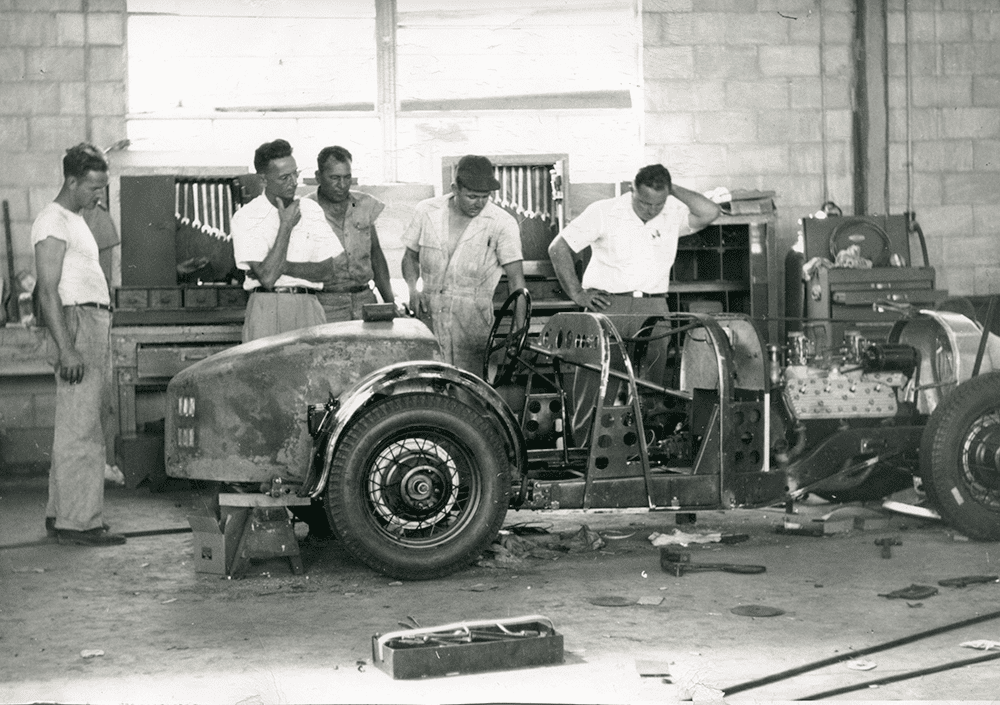
Nostalgia is one of the important drivers in automobile collecting. Nostalgia is our connection to the past through personal memory. It is our interaction with the past through an old car that survived to the present. For me the Alligator is the frozen memory of that ride up A1A. Its presence today is that ride made tangible in metal, paint and rubber. Beyond that, its presence evokes memories of my father who died in 1954. It evokes a time and place that is forever gone but lives encapsulated in this physical thing. I am at once a kindergartener and an old man. The juxtaposition is poignant.
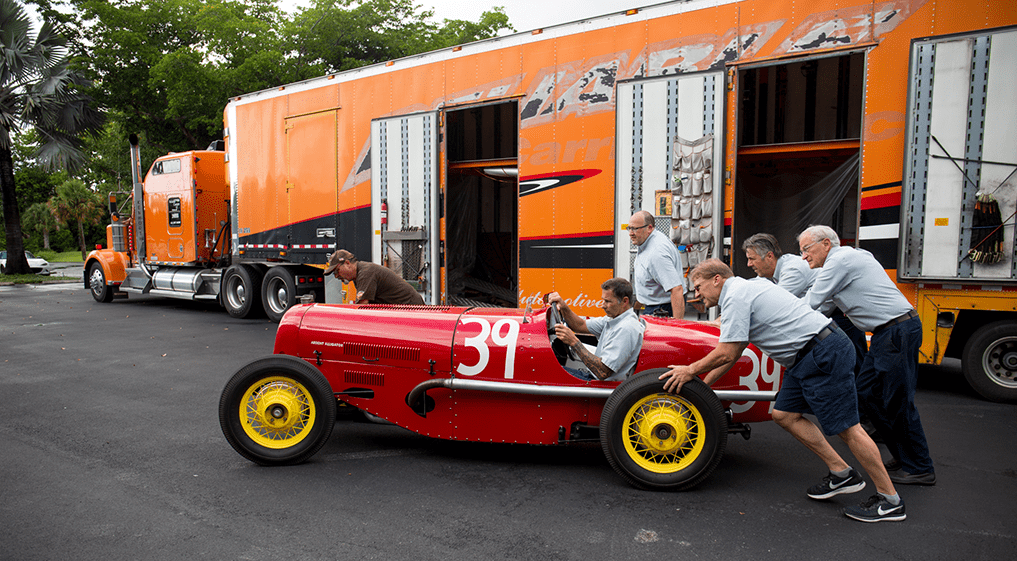
By restoring the Alligator, I will re-enact the original build process in Tampa so long ago. By consulting the original parts invoices from our archives, I will follow the design and build process from the day. This is the essence of the past in the present: the repetition, re-inscription, repurposing, remaking of the artifact over time. It is revisiting my father in a deep way through his car.